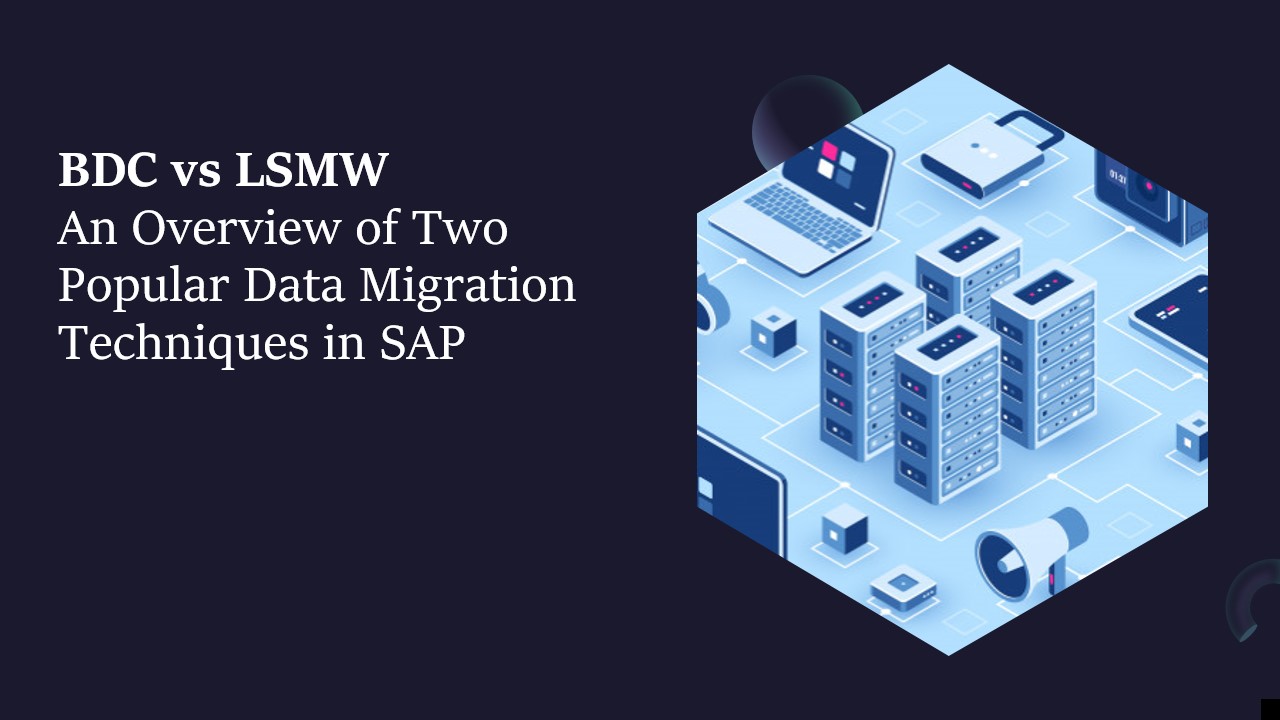BDC vs LSMW: An Overview of Two Popular Data Migration Techniques in SAP

Data migration is a crucial process in any SAP implementation project. Two commonly used methods for data migration in SAP are Batch Data Communication (BDC) and Legacy System Migration Workbench (LSMW). Both methods have their own strengths and weaknesses, and the choice of method depends on various factors such as the complexity of data, data volume, and available resources. In this blog post, we will discuss the differences between BDC and LSMW.
Batch Data Communication (BDC)
BDC is a manual data migration technique that involves the creation of custom programs in ABAP (Advanced Business Application Programming) to automate the process of data entry. BDC uses transaction codes to record user actions and then replays these actions to create the required data in SAP. BDC is best suited for simple data migrations with small data volumes and where the data to be migrated can be extracted into a flat file.
Advantages of BDC:
- Flexibility: BDC allows for a high degree of flexibility as the custom programs can be tailored to meet specific business requirements.
- Data validation: BDC allows for data validation and error handling, which helps to maintain data integrity during the migration process.
- Control: BDC provides better control over the data migration process as the user can monitor each step of the process.
Disadvantages of BDC:
- Customization: BDC requires custom programming, which can be time-consuming and requires specialized skills.
- Maintenance: BDC programs need to be maintained and updated every time there is a change in the SAP system or business requirements.
- Reliability: BDC is prone to errors due to changes in the SAP system or user actions, which can affect the accuracy and completeness of the migrated data.
Legacy System Migration Workbench (LSMW)
LSMW is a tool in SAP that provides a user-friendly interface to migrate data from legacy systems into SAP. LSMW uses predefined data migration objects (DMOs) that can be customized to meet specific business requirements. LSMW is best suited for complex data migrations with large data volumes and where the data to be migrated is in various formats.
Advantages of LSMW:
- Ease of use: LSMW provides a user-friendly interface that does not require programming skills, making it easy to use for non-technical users.
- Reusability: LSMW DMOs can be reused for future data migrations, which saves time and effort.
- Data mapping: LSMW provides a data mapping feature that maps the source data to the target SAP fields, which reduces errors and ensures data consistency.
Disadvantages of LSMW:
- Limited customization: LSMW DMOs have limited customization options, which may not meet specific business requirements.
- Testing: LSMW requires extensive testing to ensure data accuracy and completeness, which can be time-consuming.
- Data validation: LSMW has limited data validation options, which may affect data integrity during the migration process.
Thus, BDC and LSMW are two different approaches to data migration in SAP. While BDC provides flexibility and control over the data migration process, it requires custom programming and is prone to errors. On the other hand, LSMW is easy to use and provides data mapping features but has limited customization options and requires extensive testing. The choice between BDC and LSMW depends on various factors such as the complexity of data, data volume, and available resources. A careful evaluation of these factors can help in selecting the right approach for data migration in SAP.

